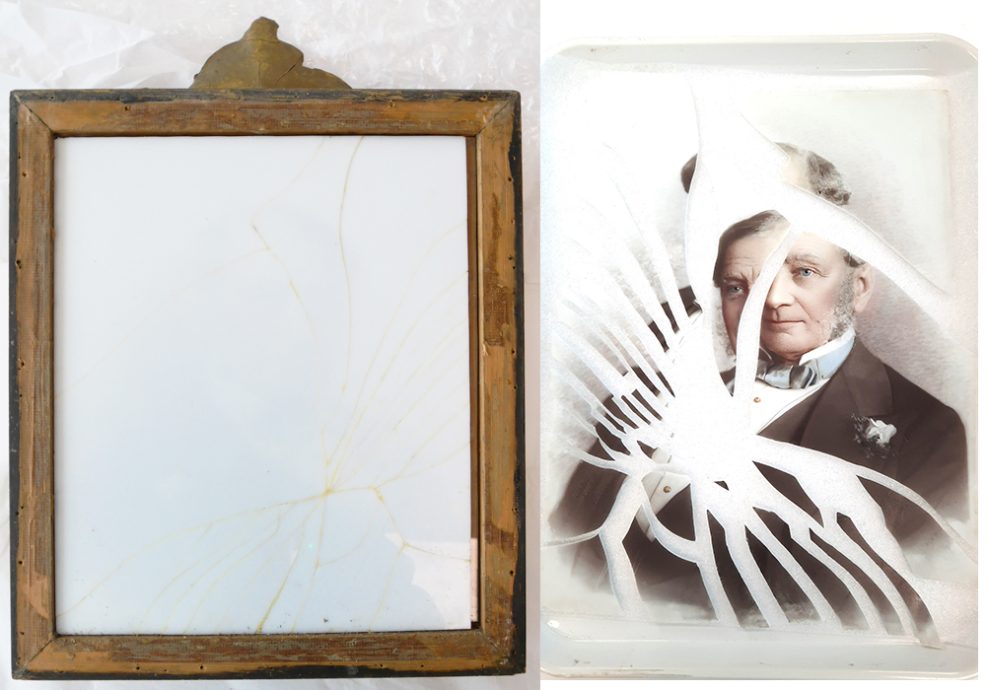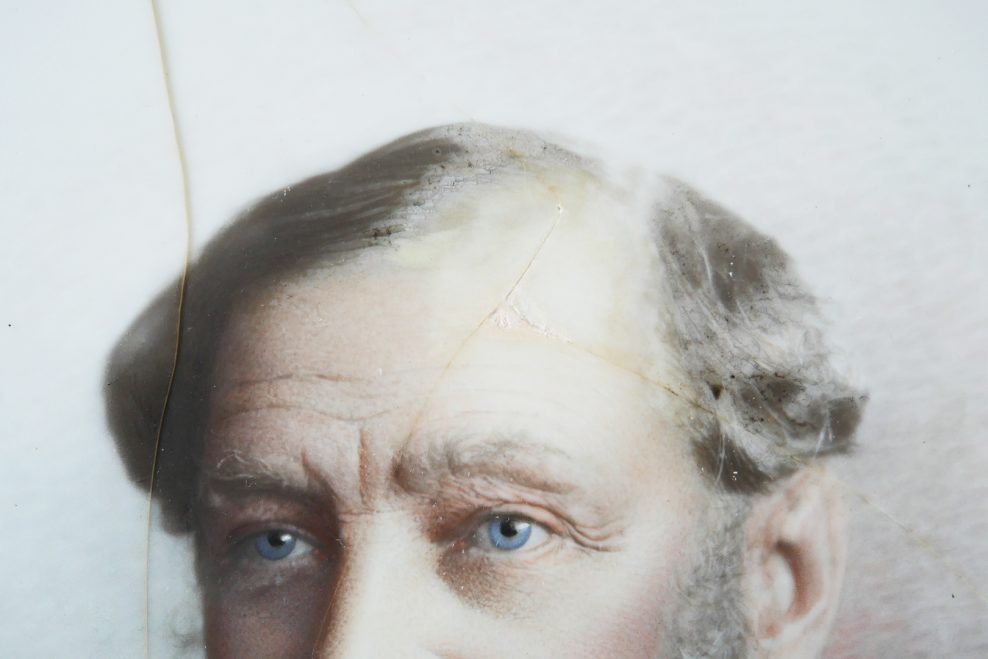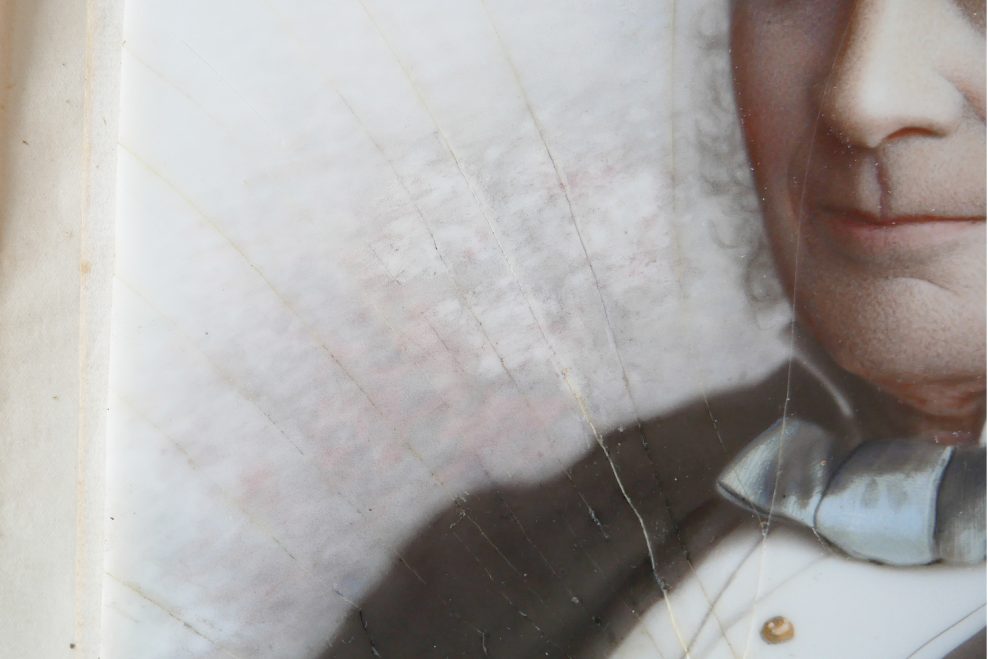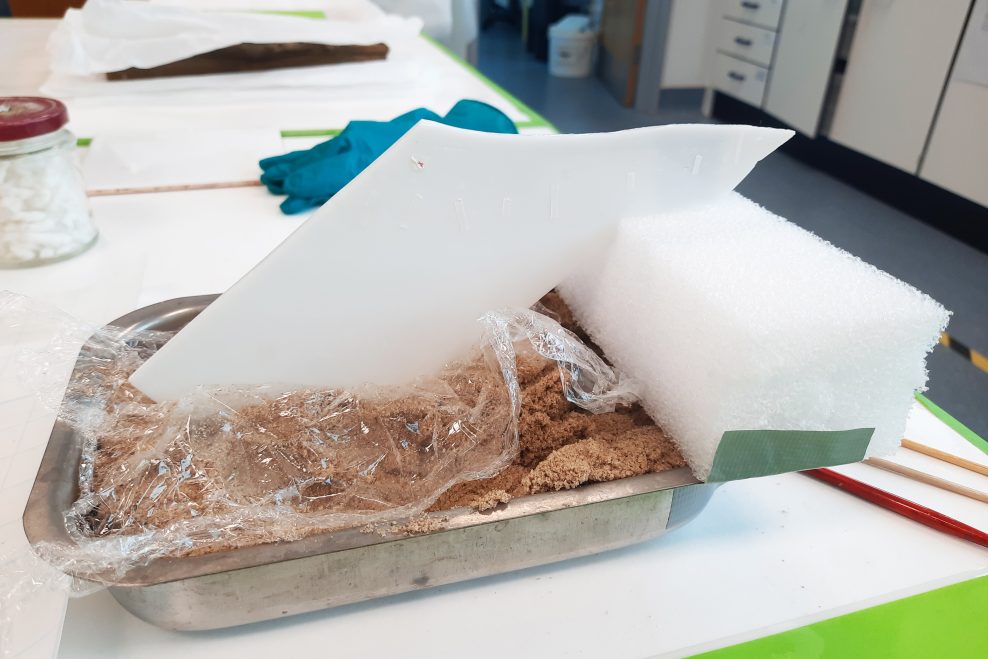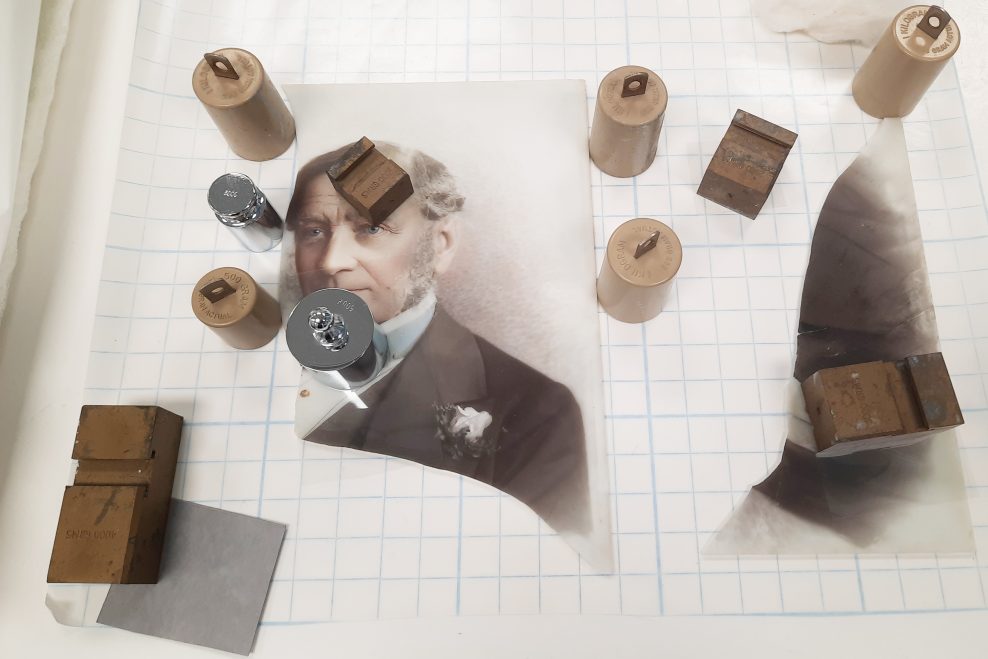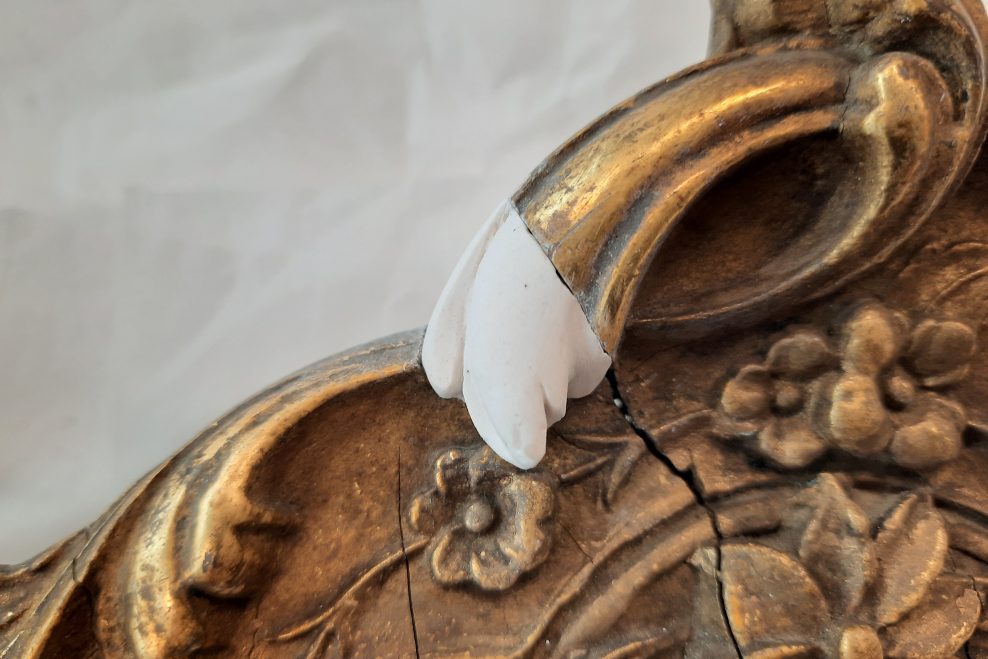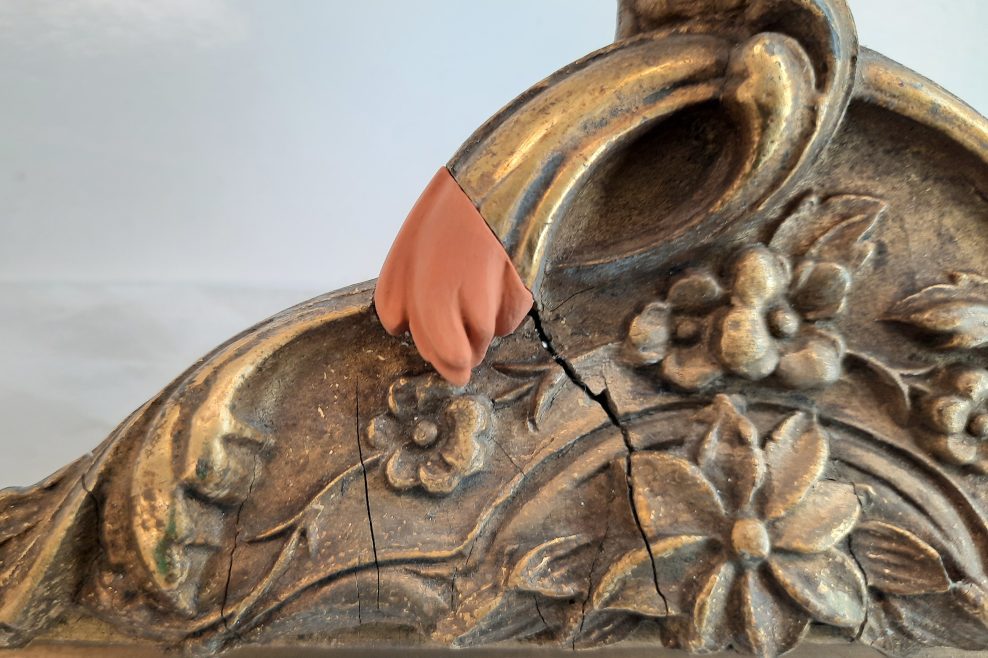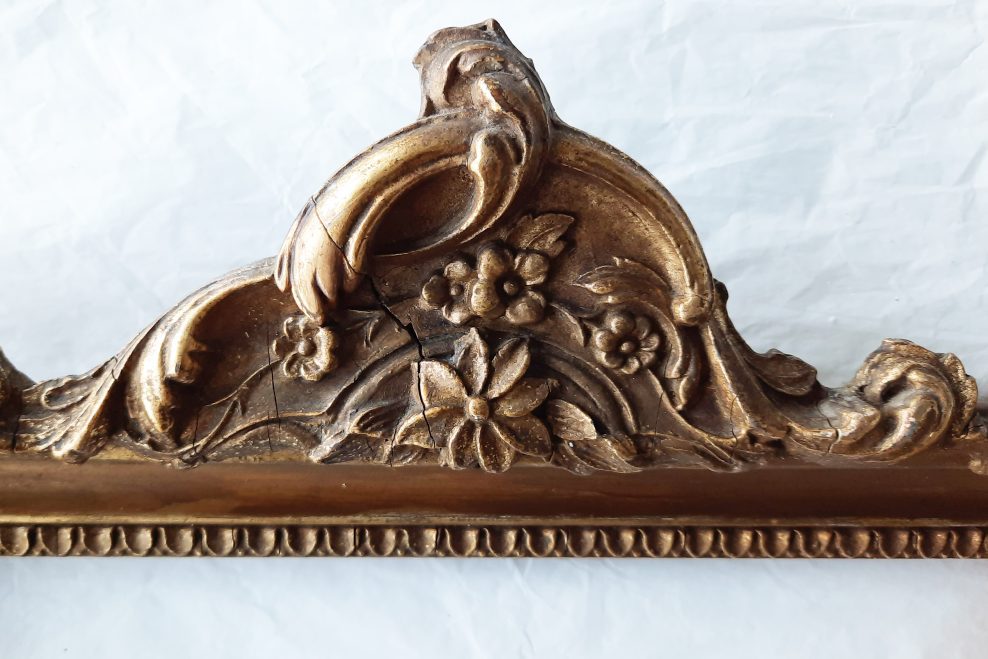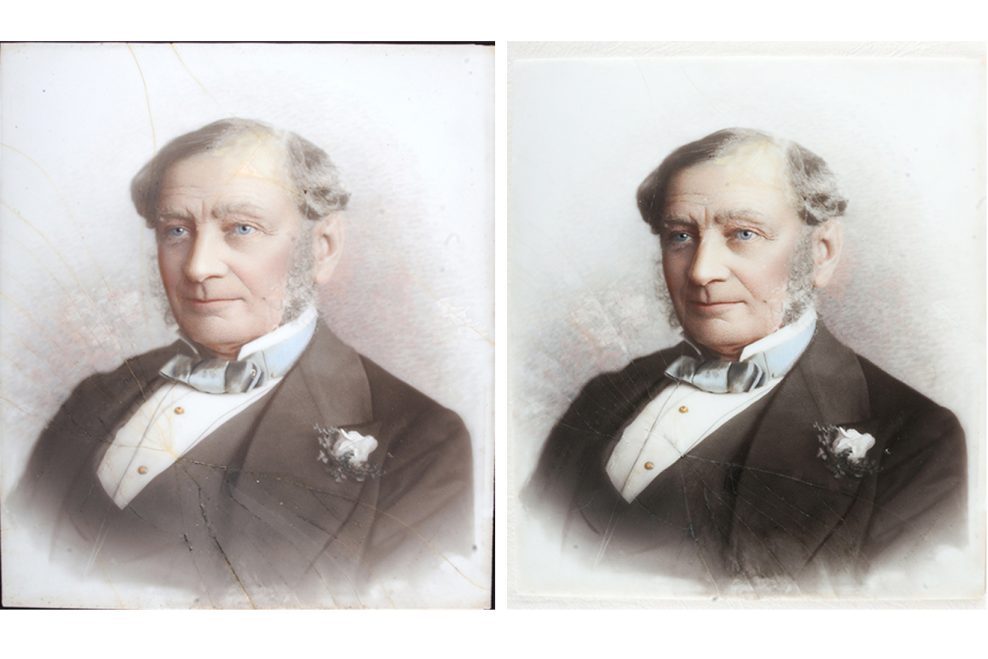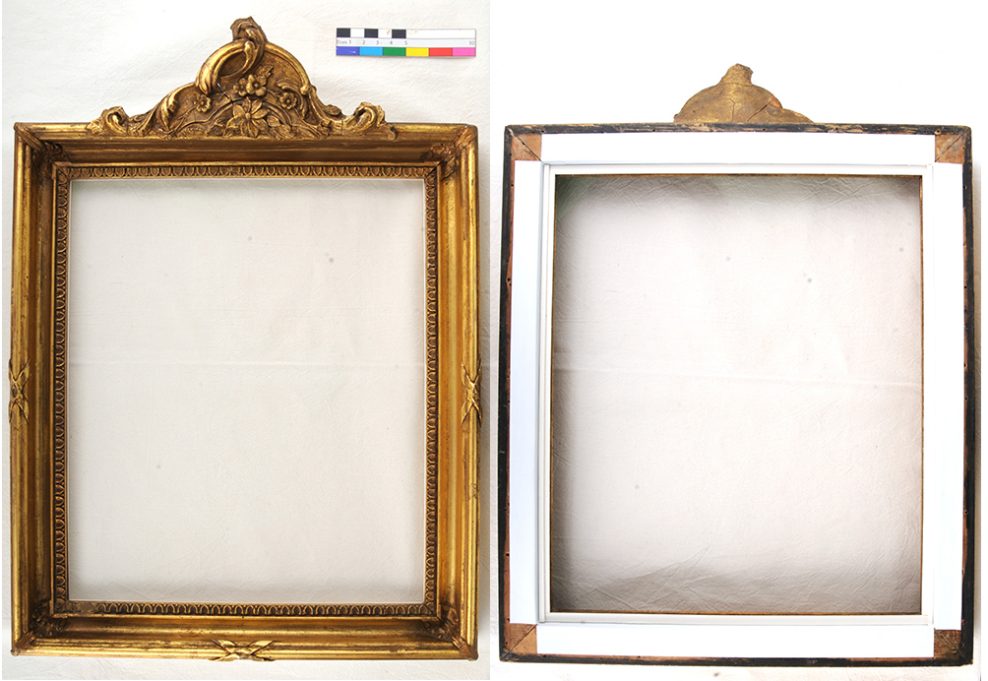Projects
Opaltype portrait, STEAM Museum of the Great Western Railway, Swindon
This 19th century painted photograph on glass had been shattered into 28 pieces and repaired with a now-yellowed, failing adhesive. CMAS was approached to try to take down the repair, improve on the alignment of the pieces and re-adhere with a conservation-grade adhesive, as well as restore a missing element on the gilded frame. Upgrading the ‘frame package’ to a conservation standard was also requested.
A rather interesting object arrived in the lab, which at first glance appeared to be an intricately detailed portrait painting on a milky-white opaque glass (known as opaline glass), displayed in a gilded frame. The portrait was of Daniel Gooch (1816-1889), an English railway locomotive engineer, responsible for identifying the site of Swindon Works and designing the first complete locomotive to be constructed there in 1846.
The broken piece had been adhered back together with a glue that was now yellowing and failing, and the glass was ‘stepped’ where the joins were not well-aligned. My eye was drawn to the disruption of the original paint around the fractures, which had been dissolved in the process. There was also a ‘smudged’ appearance to the image, particularly visible around the edges where the black background thins and blends into the glass. Understanding the materials used for creating the piece, and for restoring it, was vital to determine if, and what, could be done to stabilise it.
Opaltypes are relatively rare as they had a short production period, between c. 1860-1940 and are prone to damage and loss. In brief, an opalype is a positive photographic image on opaline glass, commonly with paint applied to it. The sensitivity of the paint (solubility tests indicated it was in fact watercolour) and the gelatin to water required avoiding water-based substances for treatment, and there was still considerable risk that removal of the adhesive might disrupt one or more of the complex layers of the piece, just by mechanical action alone, so a method was used to expose the adhesive to a ‘solvent atmosphere’, softening and swelling the epoxy by use of vapours without the need to apply the solvent directly as a liquid.
The glass did not lie flat and had ‘sprung’ when it had broken, resulting in the pieces no longer joining perfectly to each other. I used a combination of vertical and horizontal assembly methods and a conservation-grade epoxy resin to re-adhere the broken pieces, which would enable my own work to be taken down again in future without disrupting the paint or gelatine. Filling and in-painting of losses was kept to an absolute minimum, and only where the loss was particularly visible and distracting, as the mechanical action of levelling a fill and cleaning any excess material put the image at risk of loss and staining from surface dirt.
Minor conservation modifications were made to the frame, including the creation of spacers within the rebate to prevent the opaltype from touching the framing glass, and substituting UV-filtering glazing for the existing glass, so protecting the light-sensitive watercolour paint from fading. Corroding iron fixings were also replaced with more stable copper-alloy alternatives. A visually-distracting loss in the moulding of the frame was modelled, cast, gilded and distressed to mimic the layers present on the frame. The shape was intended to blend well with the existing, without appearing to be original.
